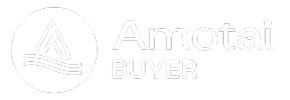



Eurotray® Roll Seam
For Designer, Metallic and Gloss colours, download the ColorCote® special colours brochure.

Light Commercial
Christchurch
Invercargill
Eurotray® Roll Seam Performance
With shadowed elegance, this simple but stylish profile can be formed from steel based materials as well as copper and zinc. Creating a slightly softer finish and a larger shadow effect than Eurotray® Roll Cap, Eurotray® Roll Seam can be machine curved to a tight radius allowing for more expressive detailing. Eurotray® Roll Seam can also be concave curved.

*In snow loading zones N1-N5 (as per Section 15 of NZS 3604), please contact the Dimond technical team at rooftech@dimond.co.nz for the minimum pitch requirements.
Sheet Tolerances
Sheet width: ±5mm
Sheet width for aluminium +0, -15mm. If sheet cover widths are critical, advise Dimond Roofing at time of order.
Sheet length: +10, - 0mm. For horizontal wall cladding where notified at time of order of intended use, tighter tolerances can be
achieved +3, -0.
(1) Product only available in ColorCote® MagnaFlow™ or Colorsteel® MAXX coated product range
(2) Please contact your Dimond Roofing 0800 Dimond (0800 346 663) for availability.
Roll-forming facilities at: Auckland, Christchurch and Invercargill
Curving facilities: Machine is transportable
For curving restraints check with the local RoofingSmiths.
Sheet lengths: Eurotray® is custom run to order. Where long sheets are used, consideration must be given to:
- Special transportation licences
- Should be run on-site
- Site access for special lifting equipment
- Fixing techniques to accommodate thermal expansion
Oil Canning
Oil Canning is the visible waviness in the flat areas of metal roofing and walling. Oil canning produces an aesthetic effect inherent in standing seam tray profiles and profiles/flashings with wide flat elements. It does not cause detriment to product performance.
Oil canning can occur during the forming and installation processes and during thermal expansion of the roof sheeting during its life cycle. The effect can be more or less pronounced depending on differing light and sun angle conditions and the coating gloss levels.
For fully supported standing seam tray profiles, oil canning can be reduced by the vented roof underlay (e.g. Tyvek Metal), in addition, backer rods under the tray can also be used.
There are several options to reduce the oil canning effect in tray-type profiles and flashings, for example,
a) increasing the thickness of the material,
b) using stiffening swages in wide flat elements and
c) limiting flat elements to less than 150mm width.
For further information, please refer to the New Zealand Metal Roof and Wall Cladding Code of Practice, Section 12.3.
Relevant Product CAD Details
Below you will find all of the relevant product CAD technical details in .dwg, .pdf & .rvt format.
If you have any questions regarding the details below please contact one of our technical team on 0800 ROOFSPEC.
Product Technical Statement
To help you get through the building consent process as quickly as possible, we have developed the Product Technical Statement (PTS) downloads to make it quick and easy for both Architects and Home Owners to access the documentation required.
The PTS downloads hold all of the information that the council requires for a building consent where Dimond product is specified.
Product Brochure
Need a brochure for one of our roofing profiles? Here you can download one for each of our profiles with the basic information and details you need during the decision process.
Below you can download our homeowner’s brochure which includes some of our profiles and basic product information for homeowners when re-roofing or building new.













































